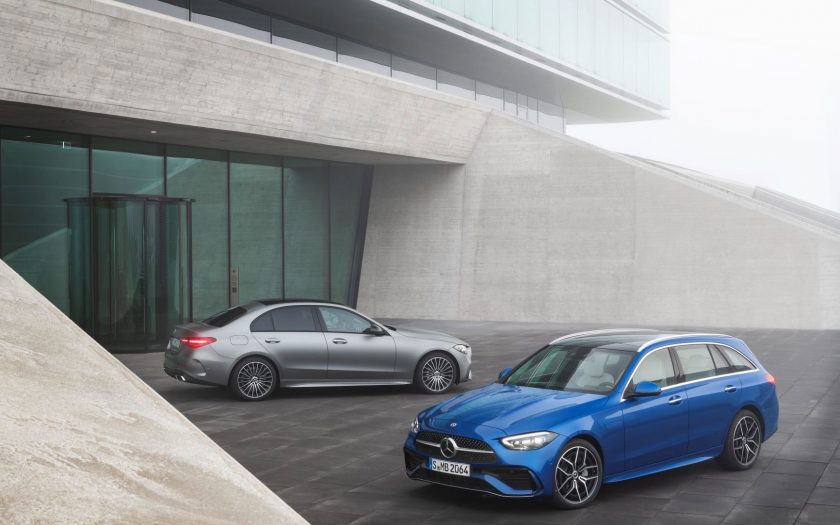WHO WOULD KNOW MORE about the development of the new Mercedes-Benz C-Class than the chief engineer? Christian Früh, Chief Engineer for the Mercedes-Benz C-Class, spoke with seniordriveraus
In the last decade, the C-Class was the highest-volume Mercedes-Benz model. Since the introduction of the still current generation in 2014, over 2.5 million Saloon and Estate models have been sold. All in all, over 10.5 million Mercedes-Benz cars in this category have been delivered to customers since 1982.
Christian Früh has been the Chief Engineer for the C-Class since April 2009. A native of Heidelberg, he previously headed the development of the assistance systems and was project manager for the Mercedes-Benz SLR McLaren. Früh holds a degree in mechanical engineering after studying at the universities of Karlsruhe and Darmstadt.
seniordriveraus: Mr Früh, what’s your personal highlight of the new C-Class?
Christian Früh: For me, the highlights include the new plug-in hybrid generation with an electric range of around 100 kilometres, nimble handling, and a user-friendly boot. We also pushed the limits with respect to driving dynamics and active safety: the new rear-axle steering opens up new dimensions in driving pleasure. But this is only the tip of the iceberg. If we go through the vehicle in detail, we find superb innovations and features for every taste wherever we look. And in the end, that’s what distinguishes the C-Class – you don’t (really) need any more car than this.
sd: What was the main development focus?
CF: Fuel economy and sustainability are the order of the day in vehicle development. The design and proportions of the new C-Class stand for dynamism just as much as the actual performance does.
sd: And the new plug-in hybrids are a great step forward in sustainability?
CF: Yes, because at around 100 kilometres, the electric range will be twice that of the preceding model. The additional electric output is 95 kW. The battery can be charged to 100 percent capacity in 30 minutes. For many of their journeys, our customers will never use the combustion engine. Depending on customer behaviour and route profile, the carbon footprint can be as good as that of a BEV – depending on the electricity mix, of course. Not forgetting the considerably improved daily practicality: Despite the higher nominal battery capacity of 25.4 kWh, the luggage compartment floor is level and offers more space than in the preceding model. However, not only the plug-in hybrids, but also the other engines are in line with our “Electric First” strategy. Because each model of the C-Class has an electrified hybrid powertrain.
sd: You have a passion for skiing. After your active career on the German national freestyle team, you were approached by the German Skiing Association and nearly became a coach. This suggests that an Estate model would be the ideal C-Class for you?
CF: (laughs) Yes, in 1990 I reached a point where I had to decide whether to make sport my profession or base my career on my university degree. Looking at it today – as Chief Engineer for the C-Class – there are certainly some parallels with being a coach: you have to lead and motivate the team, you are always measuring yourself against the best in the world, and you’re pleased when you achieve success, break records, arouse public interest and receive awards. And if you’re at the high level we’ve reached with the C-Class, you fight particularly hard for the last few percentage points of progress, like a competitive athlete. But to answer your question: yes, I’m a fan of the versatile Estate model, especially in combination with 4MATIC. And we may have a surprise in store for fans of sporty estate cars with striking looks and dynamic handling …
